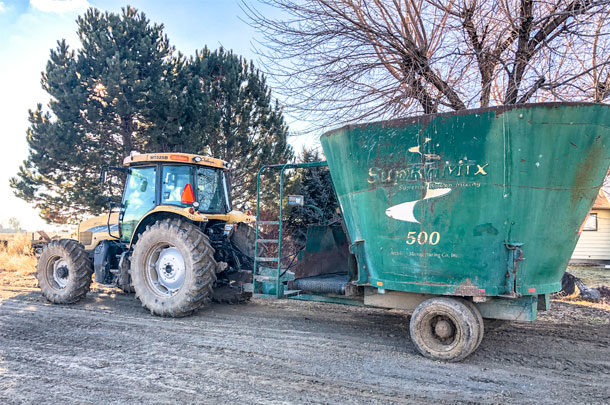Most farmers run some cattle to graze on crop stubble, and most ranchers raise some crops to feed their cattle. There are even years when bona fide farmers earn more from those cows than they do from their crops. In those years, are they ranchers? The antagonism between the two producers would answer that question with a resounding “No.” So, who is really a farmer and who is really a rancher? I believe it comes down to cattle or equipment.
Farmers have cattle because they have to have cattle. They need some income diversity; they need to increase efficiency; and they need something to feed the unmarketable crops to. Most don’t actually like the cows – they simply put up with the cows in the hope of a decent check come sale time.
Ranchers have equipment because they have to have equipment. They need to move hay bales; they need to run the feed wagon; and they need to clean out calving pens. Ranchers wish they could get by with just a horse, a pickup and a stock trailer, but most of us ain’t that lucky.
Our operation falls into that second category. We have been growing our herd for seven years, and for five of those seven years, we got by with nothing but a 60-horsepower tractor with a bucket. However, that has recently changed … for the worse. In the last two years, we have also acquired a four-wheeler, a skid steer, a manure spreader, a feed wagon and a 110-horsepower tractor – a slew of implements in addition to the aforementioned 60-horsepower tractor. It was a slick road to this menagerie of equipment. One led right to the next, and it has brought us nothing by trouble.
When we purchased our skid steer, it was touted as the best all-around ranch machine. It can move hay, clean pens, push snow, auger fence postholes, and on and on. Since becoming the proud owners, we have replaced a drive motor and, most recently, the entire engine thanks to a poorly placed air-intake valve.
Last year, we decided to grow corn silage to feed the cattle. Even with all expenses considered, our ration is $2 cheaper per head per day than our mostly hay ration. Seemed like a no-brainer at the time. Knowing we would be feeding silage, we bought a feed wagon. We began to use the feed wagon and quickly realized that our 60-horsepower tractor would not last long if we used it to mix our oat hay and silage ration. The hydraulic pump blew after just a few weeks. This initiated the purchase of the 100-horsepower tractor, but we decided to keep the 60-horsepower tractor, you know, “just in case.”
The more equipment we own, the more problems we have, and the more problems we have, the more equipment we purchase. As the equipment section of our balance sheet gets larger so does the repair bill on our profit and loss, because tinkering around on a tractor engine is about as appealing to us as chasing cows out of a newly planted grain field is to a farmer. That’s to say, we don’t want anything to do with it.
So what is the difference between a farmer and rancher? To put it simply, a farmer likes their equipment and a rancher likes their cows. The unappealing smell of tractor grease puts the Louder family firmly in the rancher category. The farmer may say the same about cow manure – we simply say, “It smells like money.”
So, with that rationale, which are you – a farmer or a rancher? ![]()
Erica Louder is a freelance writer based in Idaho. Email Erica Louder.
PHOTO: Which comes first – the chicken or the egg, or the feed wagon or the tractor? Photo by Erica Louder.











